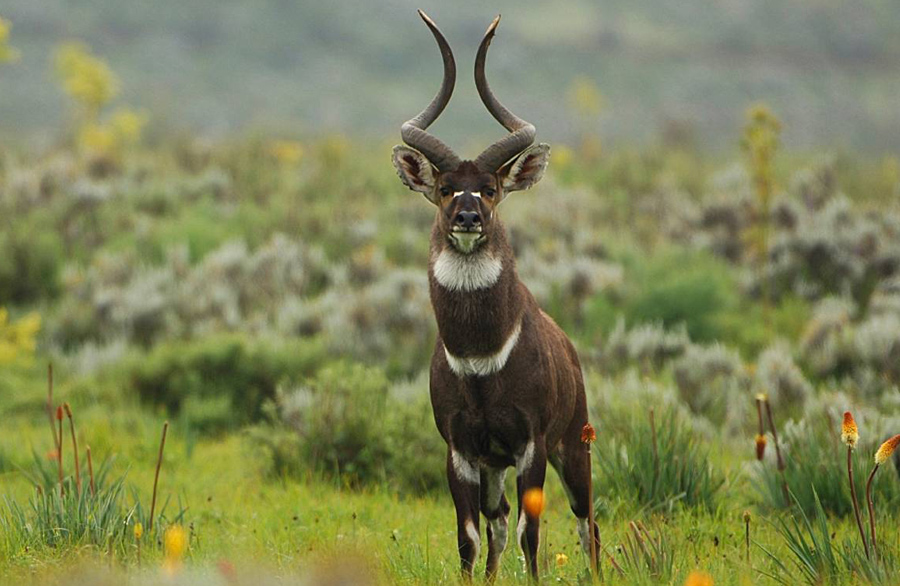
Bale Mountains National Park
Bale Mountains National Park is a national park in Ethiopia. The park encompasses an area of approximately 2,150 square kilometres (530,000 acres) in the Bale Mountains and Sanetti Plateau of the Ethiopian Highlands.
The park’s Afromontane habitats have one of the highest incidences of animal endemicity of any terrestrial habitat in the world. The park was nominated to the World Heritage Tentative List in 2009.
The park is divided into five distinct and unique habitats: the Northern Grasslands (Gaysay Valley), Northern Woodlands (Park Headquarters), Afro-alpine Meadows (SanettiPleateau), Erica Moorlands, and the Harenna Forest.
Habitats of the Bale Mountains National Park range from grassland areas around 3,000 metres (9,800 ft) in elevation, to Mount TulluDemtu, the second highest point in Ethiopia at 4,377 metres (14,360 ft) above sea level.
Surrounded by East African pencil juniper (Juniperusprocera) trees and St. John’s wort, waist-high wildflowers and grasses grow in the Northern Grasslands and Woodlands. Tree heath (Erica arborea) is native to the Ethiopian montane moorlands ecoregion in the park.
The Afro-alpine moorlands of the Sanetti Plateau is the largest continuous area of its altitude on the entire continent of Africa. Carpeted in lichen covered rocks, and punctuated by Giant lobelia (Lobelia rynchopetalum) that grow to heights of up to 12 meters. The Plateau is also dotted with alpine lakes and streams, providing important resident wildlife resources, as well as wintering and passage stations for rare and regionally endemic birds.
The Harenna Forest plant community makes up about half of the park, a woodland of trees draped in moss and lichens that seem to drip off the branches. The area is frequently cloaked in fog, and wildlife is elusive.

